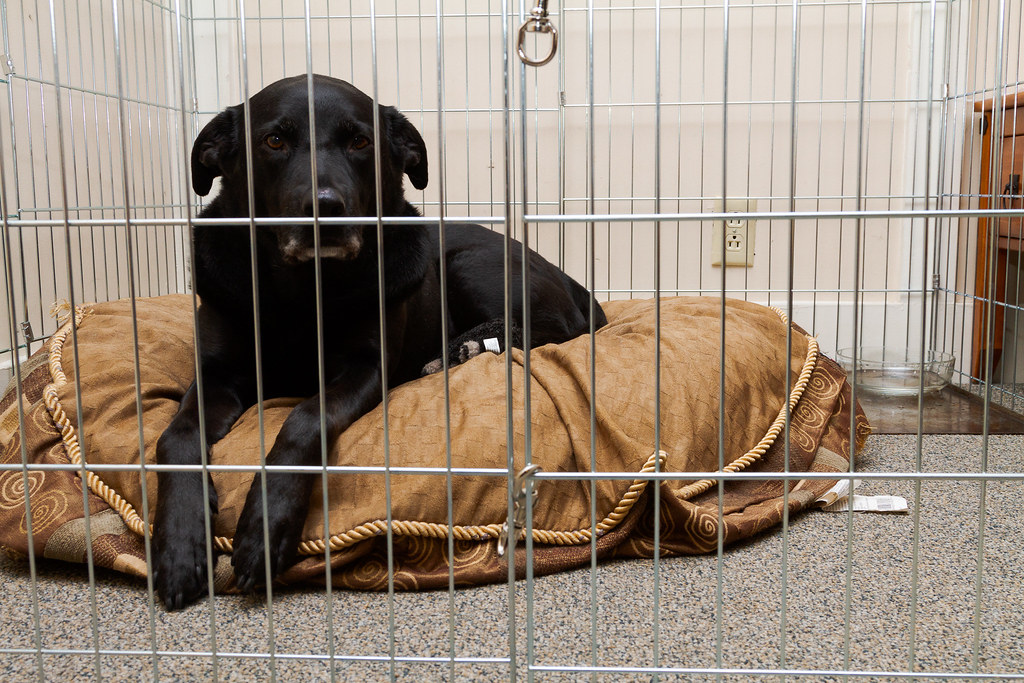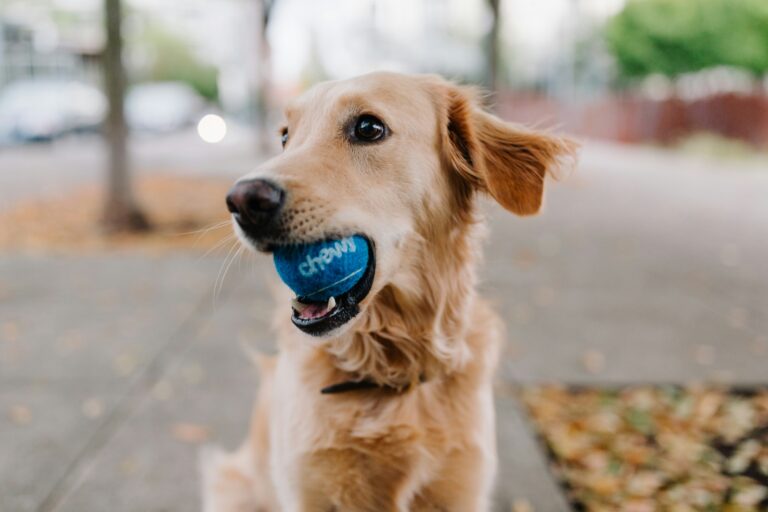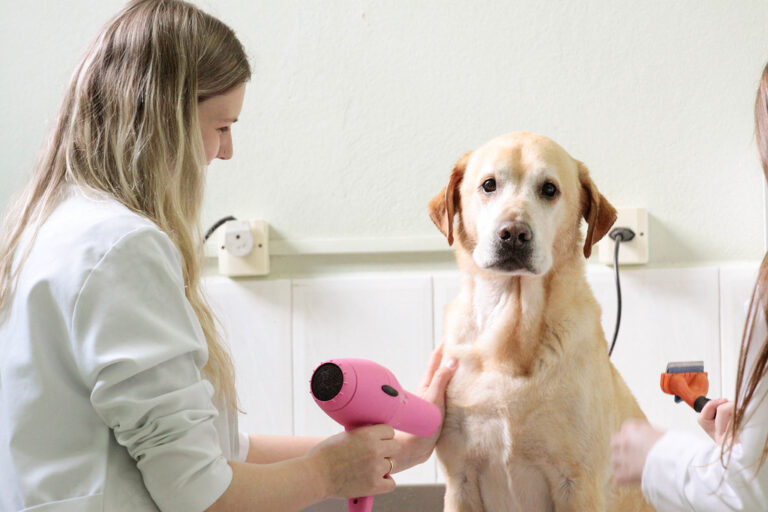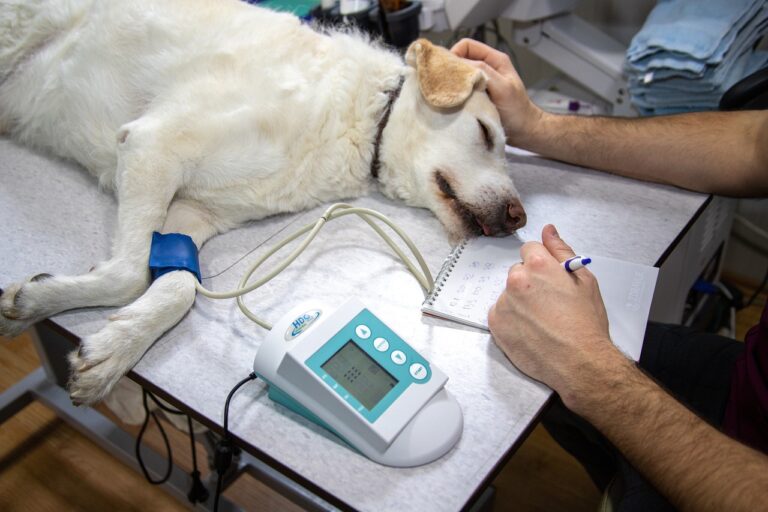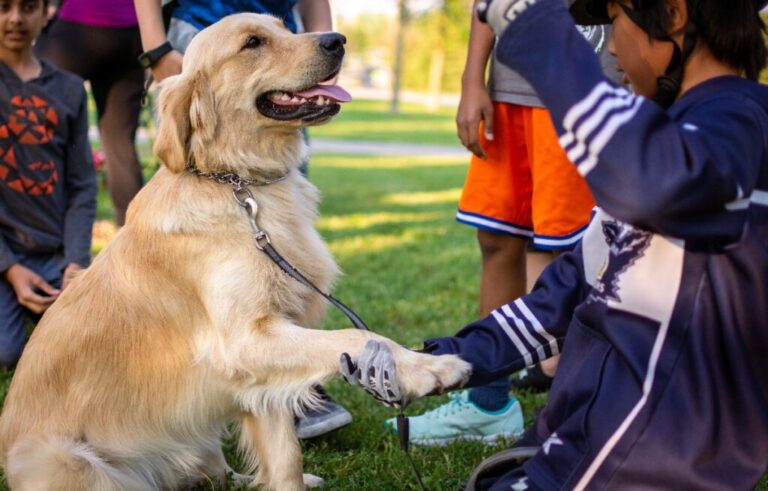Open Your Heart, Save a Life: Labrador Retriever Rescue and Adoption
Labrador Retriever Adoption: Finding Your Perfect Companion
If you’re considering labrador retriever rescue and adoption, you’re on the right path to finding a loyal and loving companion. Labrador Retrievers are consistently one of the most popular breeds in the United States, which unfortunately contributes to their high population in shelters. However, there are many benefits to adopting a Labrador Retriever and giving them a second chance at a forever home.
The Labrador Retriever: A Popular Breed in Shelters
Labrador Retrievers are known for their friendly and gentle nature, making them a popular choice for families and individuals alike. However, their popularity also means that they are frequently found in shelters. According to Rescue Dog Home, misconceptions about their breed characteristics and differing regional attitudes towards Labradors are additional factors for their presence in shelters. Additionally, many dogs labeled as “Lab mixes” may not actually be Labrador mixes, further contributing to the abundance of Labradors in shelters.
Why Labrador Retrievers End Up in Shelters
Labrador Retrievers may end up in shelters for various reasons. One common factor is the popularity of Labrador puppies due to their cuteness and calm demeanor. This can lead to impulse purchases or being given as gifts, especially to individuals who may not fully understand the commitment required for a high-energy working dog like the Labrador. Additionally, the presence of unscrupulous breeders who misrepresent Labradors as great starter dogs without considering the suitability of the owner can result in Labradors being surrendered to shelters (Rescue Dog Home).
Benefits of Adopting a Labrador Retriever
Adopting a Labrador Retriever can be a rewarding experience for both you and your new furry friend. Here are some key benefits of adopting a Labrador Retriever:
-
Save a life: By adopting a Labrador Retriever from a rescue or shelter, you are providing them with a second chance at a loving home. You are giving them the opportunity to live a happy and fulfilling life.
-
Pre-screened dogs: Rescue organizations often evaluate the temperament and health of the dogs in their care, ensuring that you are adopting a Labrador Retriever that has been assessed and is ready for adoption. This can provide peace of mind and help you find a Labrador that fits well with your lifestyle and family.
-
Support a cause: When you adopt a Labrador Retriever, you are supporting the efforts of rescue organizations and contributing to their mission of saving and rehoming dogs in need. Your adoption fee often goes towards the care, medical expenses, and future rescue efforts.
-
Companionship and loyalty: Labrador Retrievers are known for their loyalty and their ability to form strong bonds with their owners. They are affectionate, intelligent, and make excellent companions for individuals and families alike.
By adopting a Labrador Retriever, you not only gain a wonderful companion but also make a positive impact on the life of a deserving dog. Stay tuned to learn more about Labrador Retriever rescue organizations and the adoption process.
Labrador Retriever Rescue Organizations
If you’re considering adopting a Labrador Retriever, there are several reputable rescue organizations that specialize in Labrador Retrievers. These organizations are dedicated to saving and rehoming Labs, ensuring they find loving forever homes.
Labs4Rescue: Saving and Rehoming Labs
Labs4Rescue is a volunteer 501(c)(3) non-profit organization that focuses on rescuing and rehoming Labrador Retrievers and Labrador Mixes. Their mission is to provide a new life for rescued or displaced Labs while promoting responsible pet ownership (Labs4Rescue). They work tirelessly to rescue Labs from shelters, owner surrenders, and other at-risk situations. Labs4Rescue provides medical care, vaccinations, spaying/neutering, and socialization for the Labs in their care. By adopting from Labs4Rescue, you can provide a loving home to a Labrador Retriever in need.
Labrador Retriever Rescue of Florida (LRROF): Placing Labs in Forever Homes
Labrador Retriever Rescue of Florida (LRROF) is another reputable organization dedicated to placing Labrador Retrievers in loving, permanent homes. Established in 2000, LRROF works to rescue Labs in need and provide them with necessary veterinary care, training, and rehabilitation. They have a comprehensive adoption process to ensure that Labs are placed in suitable homes (LRROF). By adopting from LRROF, you can make a positive impact on the life of a Labrador Retriever and provide them with a forever home.
Pacific Assistance Dogs Society (PADS): Offering Released Dogs for Adoption
The Pacific Assistance Dogs Society (PADS) offers a unique adoption opportunity for Labrador Retrievers. PADS is an organization that trains assistance dogs to support individuals with disabilities. Occasionally, dogs in their program are released and made available for adoption (PADS). These dogs have received extensive training and can make wonderful additions to loving homes. By adopting a released dog from PADS, you not only gain a loyal companion but also support the organization’s mission to provide assistance dogs to those in need.
Labrador Retriever Rescue: Providing Care and Finding Loving Homes
Labrador Retriever Rescue is a non-profit organization dedicated to providing care, shelter, and training for rescued and abandoned Labrador Retrievers until they find permanent, loving homes. They work diligently to assess the temperament and needs of each Labrador in their care, ensuring they are matched with suitable adoptive families (Labrador Retriever Rescue). By adopting from Labrador Retriever Rescue, you can provide a second chance to a Labrador in need and help them find a safe and loving home.
These Labrador Retriever rescue organizations play a crucial role in saving and rehoming Labs. By adopting from these organizations, you not only gain a loyal and loving companion but also support their efforts to provide care and find forever homes for Labrador Retrievers in need. Before adopting, it’s essential to understand the adoption process, submit an application, and be prepared to provide a safe and nurturing environment for your newly adopted Labrador Retriever.
The Labrador Retriever Adoption Process
If you’ve made the decision to adopt a Labrador Retriever, it’s important to understand the Labrador Retriever adoption process. This process typically involves several steps to ensure that both you and the dog are a good match for each other. Let’s take a closer look at each step involved:
Submitting an Application
The first step in the Labrador Retriever adoption process is to submit an application to the rescue organization or shelter of your choice. The application will typically require you to provide information about your living situation, your experience with dogs, and your preferences for the type of Labrador Retriever you are looking to adopt. This step helps the organization assess your suitability as a potential adopter and match you with a Labrador Retriever that fits your lifestyle and needs.
Meeting the Rescue Dogs
Once your application has been approved, you will have the opportunity to meet the rescue dogs in person. This can be done at the foster homes or other designated locations set up by the rescue organization. Meeting the dogs allows you to interact with them, observe their behavior, and get a sense of their personality. It also gives the dogs a chance to become familiar with you and determine if there is a connection.
Home Visit and Adoption Agreement
After you have met the rescue dogs and have chosen a Labrador Retriever that you feel is the right fit for your family, the next step is usually a home visit. A representative from the rescue organization will visit your home to ensure that it is a safe and suitable environment for the Labrador Retriever. They will assess factors such as the size of your living space, any existing pets, and the safety of the surroundings.
Once the home visit is completed and everything is deemed satisfactory, you will be required to sign an adoption agreement. This agreement outlines your responsibilities as an adopter, including providing proper care, nutrition, exercise, and medical attention for the Labrador Retriever. Be sure to carefully review and understand the terms of the adoption agreement before signing.
Post-Adoption Support and Care
After you have adopted your Labrador Retriever, the rescue organization will continue to provide support and guidance. They may offer post-adoption care tips, training resources, and access to a network of experienced Labrador Retriever owners. It’s important to take advantage of this support system to ensure a smooth transition for both you and your new furry companion.
Adoption fees are commonly associated with the Labrador Retriever adoption process. These fees help cover the costs of caring for the dogs, including spaying or neutering, vaccinations, microchipping, and any other necessary medical care. The specific adoption fees can vary depending on the rescue organization and the age of the dog being adopted.
By following the Labrador Retriever adoption process, you can find a loving and forever home for a Labrador Retriever in need. Remember, the process may vary slightly depending on the rescue organization or shelter you choose, so it’s important to familiarize yourself with their specific requirements.
Preparing for Your Newly Adopted Labrador Retriever
Congratulations on making the decision to adopt a Labrador Retriever! Before bringing your new furry friend home, it’s important to make some preparations to ensure a smooth transition and a comfortable environment for your Labrador Retriever.
Creating a Comfortable Home Environment
When your Labrador Retriever arrives at their new home, it’s crucial to create a space where they feel safe and secure. Set up a designated area for your dog with a cozy bed or crate, providing them with a quiet retreat they can call their own. This will help them adjust to their new surroundings and alleviate any anxiety they may feel during the initial transition period. For more information on creating a comfortable home environment for your Labrador Retriever, check out our article on understanding Labrador Retrievers temperament.
Essential Supplies for Your Labrador Retriever
Gathering the necessary supplies in advance is essential to ensure you have everything your Labrador Retriever needs. Some essential supplies include:
- A flat-buckle or martingale collar
- A harness for walks
- A 6-foot nylon leash
- Food and water bowls
- A comfortable bed
- Appropriate toys to prevent swallowing hazards
Having these supplies readily available will help you provide for your Labrador Retriever’s needs from day one. For more detailed information on essential supplies for your Labrador Retriever, take a look at our article on choosing the right toys for Labrador Retrievers.
Establishing a Routine for Your New Pet
Dogs thrive on routine, and establishing a consistent daily schedule will help your Labrador Retriever feel secure and adapt more easily to their new home. Determine feeding schedules, walking routines, resting areas, and house rules to set clear expectations for your new pet. Consistency and predictability will provide a sense of stability and help your Labrador Retriever settle into their new routine. For more guidance on establishing a routine for your Labrador Retriever, refer to our article on training tips for Labrador Retrievers.
House-Training and Introducing Your Labrador to Other Pets
House-training is an essential aspect of welcoming a new dog into your home. Assume that your new Labrador Retriever is not trained and maintain a consistent routine to prevent accidents. Take your dog out every few hours initially to help them get used to the new environment and schedule. Positive reinforcement, patience, and consistency are key to successful house-training. For more detailed guidance, our article on Labrador Retriever puppy care provides helpful tips.
If you have existing pets at home, introducing them to your new Labrador Retriever requires careful management. Ensure that all pets are healthy, up to date on vaccinations, and in good general health before introducing them. Gradually introduce your Labrador Retriever to other pets in a controlled and supervised manner, allowing them to get acquainted at their own pace. Our article on socializing your Labrador Retriever offers valuable insights on introducing your new pet to other animals.
By preparing your home, gathering necessary supplies, establishing a routine, and focusing on house-training and introductions, you’ll be well-equipped to provide a warm and welcoming environment for your newly adopted Labrador Retriever. Remember, patience and love are key during this transition period. With time and care, your Labrador Retriever will settle in, become a beloved member of your family, and bring you years of joy and companionship.
Training and Socializing Your Rescued Labrador Retriever
When you bring a rescued Labrador Retriever into your home, training and socialization are crucial for their well-being and for building a strong bond with your new companion. Here are key aspects to consider when training and socializing your rescued Labrador Retriever.
The Importance of Training and Socialization
Training and socialization are essential for your Labrador Retriever’s development and behavior. Proper training helps establish boundaries, teaches basic commands, and promotes good behavior. Socialization, on the other hand, exposes your dog to various environments, people, animals, and experiences, helping them become well-rounded and confident.
By investing time and effort in training and socializing your rescued Labrador Retriever, you can help them adjust to their new home and prevent behavioral issues. It allows you to establish a positive and cooperative relationship with your furry friend.
Building a Strong Bond with Your Labrador
Training and socialization provide an excellent opportunity to build a strong bond with your Labrador Retriever. Positive reinforcement techniques, such as rewards, praise, and treats, can be used during training sessions to create a positive association and strengthen the bond between you and your dog.
Consistency and patience are key in building this bond. Spend quality time together, engage in play sessions, and provide plenty of affection. This will help your Labrador Retriever trust and rely on you as their caregiver and companion.
Patience and Consistency in Training
Labrador Retrievers are known for their intelligence and eagerness to please, making them highly trainable. However, each dog is unique and may respond differently to various training methods. Patience and consistency are vital during the training process.
Use positive reinforcement techniques, such as treats, verbal praise, and affection, to reward desired behaviors. Be consistent with your commands and expectations, and avoid punishment-based training methods, as they can harm the bond you are trying to build with your dog.
Consider enrolling in obedience classes or working with a professional dog trainer if you need guidance or assistance in training your rescued Labrador Retriever. They can provide valuable insights and help you address specific behavioral challenges.
The Benefits of a Well-Trained and Socialized Labrador
A well-trained and socialized Labrador Retriever is a joy to have as a companion. Some of the benefits of investing in training and socialization include:
- Improved Behavior: Proper training helps prevent behavioral issues, such as excessive barking, chewing, or aggression, promoting a harmonious living environment.
- Enhanced Safety: Training commands like “sit,” “stay,” and “come” ensure your Labrador Retriever’s safety, especially in potentially dangerous situations.
- Opportunities for Socialization: A well-socialized Labrador Retriever is more likely to get along with other dogs, animals, and people, making outings and interactions more enjoyable.
- Bonding and Trust: Training and socialization activities provide opportunities for you and your Labrador Retriever to bond, strengthening the trust between you.
Remember, training and socialization are ongoing processes that require patience, consistency, and positive reinforcement. By investing time and effort in these areas, you can help your rescued Labrador Retriever thrive and become a well-behaved and happy member of your family. For more training tips and guidance, check out our article on training tips for Labrador Retrievers.
Preparing for Your Newly Adopted Labrador Retriever
Congratulations on your decision to adopt a Labrador Retriever! Before bringing your new furry friend home, it’s important to make sure you have everything in place to provide a comfortable and nurturing environment. This section will guide you through the necessary steps to prepare for your Labrador Retriever’s arrival.
Creating a Comfortable Home Environment
A welcoming and safe home environment is essential to help your newly adopted Labrador Retriever settle in comfortably. Here are some tips to create the perfect space for your new companion:
- Designate a quiet and cozy area for your Labrador Retriever to rest and relax. Provide a comfortable bed or crate where they can retreat to when they need some downtime.
- Puppy-proof your home by removing any hazardous items or potential chewable objects that could harm your Labrador Retriever. Secure loose cords and keep toxic substances out of reach.
- Consider using baby gates or closing doors to restrict your Labrador Retriever’s access to certain areas until they are fully acclimated to their new environment.
- Provide plenty of fresh water and ensure there is always access to a shaded area or cool spot in the house to help them regulate their body temperature.
Essential Supplies for Your Labrador Retriever
Gathering the necessary supplies in advance will ensure a smooth transition for both you and your new Labrador Retriever. Here’s a checklist of essential items:
| Supplies |
|---|
| Flat-buckle or martingale collar |
| Harness |
| 6-foot nylon leash |
| Food and water bowls |
| Comfortable bed or crate |
| Appropriate toys (avoid small items that can be swallowed) |
Additionally, consider stocking up on high-quality dog food that meets the nutritional needs of Labrador Retrievers. Consult your veterinarian for specific dietary recommendations based on your dog’s age, size, and any special health considerations. For more information on the best diet and nutrition for your Labrador Retriever, visit our article on best diet and nutrition for Labrador health.
Establishing a Routine for Your New Pet
Labrador Retrievers thrive on routine, so establishing a consistent daily schedule will help them feel secure and reduce anxiety. Here are some key aspects to consider:
- Create a feeding schedule and stick to it. Regular mealtimes will aid in digestion and prevent overeating. Remember to provide appropriate portion sizes based on your dog’s age and activity level.
- Set a consistent walking and exercise routine. Labrador Retrievers are an active breed that requires regular physical activity to stay happy and healthy. Aim for daily walks, play sessions, and mentally stimulating activities.
- Determine sleeping arrangements and establish a bedtime routine. Whether your Labrador Retriever will sleep in a crate, have their bed in a designated area, or share your bed, consistency is key.
- Consistency in training is crucial for your Labrador Retriever’s development. Establish clear rules and boundaries from the start and use positive reinforcement techniques to encourage good behavior. For training tips specific to Labrador Retrievers, visit our article on training tips for Labrador Retrievers.
House-Training and Introducing Your Labrador to Other Pets
House-training is an important aspect of welcoming a new Labrador Retriever into your home. Assume that your new dog is not trained and be patient during the process. Here are some guidelines:
- Establish a routine for bathroom breaks and take your Labrador Retriever outside frequently, especially after meals, naps, and play sessions.
- Use positive reinforcement, such as praise and treats, when your Labrador Retriever eliminates in the appropriate outdoor area.
- Supervise your Labrador Retriever indoors and limit access to other areas of the house until they are fully house-trained.
- Introduce your Labrador Retriever to other pets gradually and carefully. Allow them to sniff and interact under controlled circumstances until they become comfortable with each other. For more information on introducing your Labrador Retriever to other pets, visit our article on labrador retrievers and families: a perfect match?
By preparing your home, gathering necessary supplies, establishing a routine, and implementing proper house-training techniques, you’ll be well-prepared to welcome your newly adopted Labrador Retriever into your life. Remember, patience and understanding are key during the adjustment period. With time, love, and consistent care, your Labrador Retriever will become a cherished member of your family.
